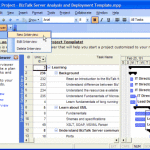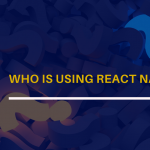10 Integration Best Practices for M&As in Power Sector
A massive surge in power and utility Mergers and Acquisitions (M&As) was observed in the 3rd quarter of 2015, where 58% of the companies are planning to pursue M&As in 2016 and ahead. 89% of private equity executives have anticipated average to the high activity of deals moving forward, shifting the focus to a quicker and phased integration, improved communication and a rigorous process of selecting an integration team. Deloitte surveyed more than 800 executives to determine the drivers of success and the key reasons of failure. Nearly 30% of executives believed integration failure as the reason behind an unsuccessful merger or acquisition. As no mulligans exist in M&A integration, here are the 10 best practices for power and utility integration teams aiming to get integration right the first time.
1. Defining an end-to-end model
Defining the roles and duties, and the expected outcomes of different governing bodies (Integration officers, senior executives, and Integration management officer) – before launching any integration teams – establishes visible and clear accountability and leadership from the outset.
2. Consistent engagement of executives
As the leaders of individual organizations, all executives need to be officially aware of the integration progress through formal channels in a timely manner. Evidence suggests that optimal outcomes are gained when the dedication of core team members remain intact throughout the integration process.
3. Formal launch of the process
At the initiation of the analysis phase, formally launching the integration planning process provides an appropriate forum for communicating a common set of messages. The formal launch of the process enables senior leadership in communicating the significance and rationale of the M&A, and in reinforcing executive leadership expectations associated with outcomes of integration.
4. Challenging the teams
The performance of integration teams is enhanced when the goals they are tasked to achieve, pursue stretch targets i.e. beyond the initial deal rationale. Stretch targets enable the teams to defend their design decisions and elaborate on the necessary trade-offs needed to gain additional value.
5. Operating model articulation
Clarity is delivered to integration teams by defining the operating model as to how the new organization will operate. With the development and communication of operating model, the integration teams will assess the available options to combine the two companies structurally and operationally; adopting a single, common means of business execution.
6. Purposeful communication
Countless utilities have designated a “Day One czar” responsible for the complete coordination of legal requisites for the smooth and problem free transaction closing. Relevant legal activities are identified by the integration teams for formal transaction closing – including financial and regulatory requirements – and developing compact implementation plans of combining the 2 parties into a single, fully integrated company.
7. Tailoring the change management approach
The core elements essential for positioning the combined company for seamless execution will be incorporated in the change management plan from the outset. The integration-specific change management plan needs to be aligned with the legacy firm’s needs and capabilities.
8. Maintaining the continuity of integration process
When the continuity of original integration process teams is maintained, it enables them to swiftly reorient from their previous planning focus towards direct implementation without losing momentum. Continuity will be ensured in the integration plans execution with the preservation of integration duties within the pre-close team framework.
9. Closely tracking dollars and initiatives
The focus of post-close integration tracking needs to be shifted to risk identification to mitigation strategy development and planned outcomes. Analyzing the combined company budget and tracking individual synergy initiatives, incorporating the lower costs from M&A has been identified as the best practice to be adopted for the first couple of years after the consummation of mergers.
10. Aligning incentives and outcomes
The board is guaranteed of the management’s focus on execution when the merger outcomes are aligned with incentives. Considering broader measures which are applicable collectively to all executives for instance merger compliance, enterprise synergy capture and milestone commitments factored into executive incentives, provides a detailed view of integration success.
Merger Announcement is just the beginning
Contrary to popular belief, merger announcement is merely the beginning. The roadway to success for an already crisis-driven industry hardly starts with shoring up integration missteps in a 2nd wave effort. The proactive approach for the companies would be to position themselves towards continuous post integration success.







